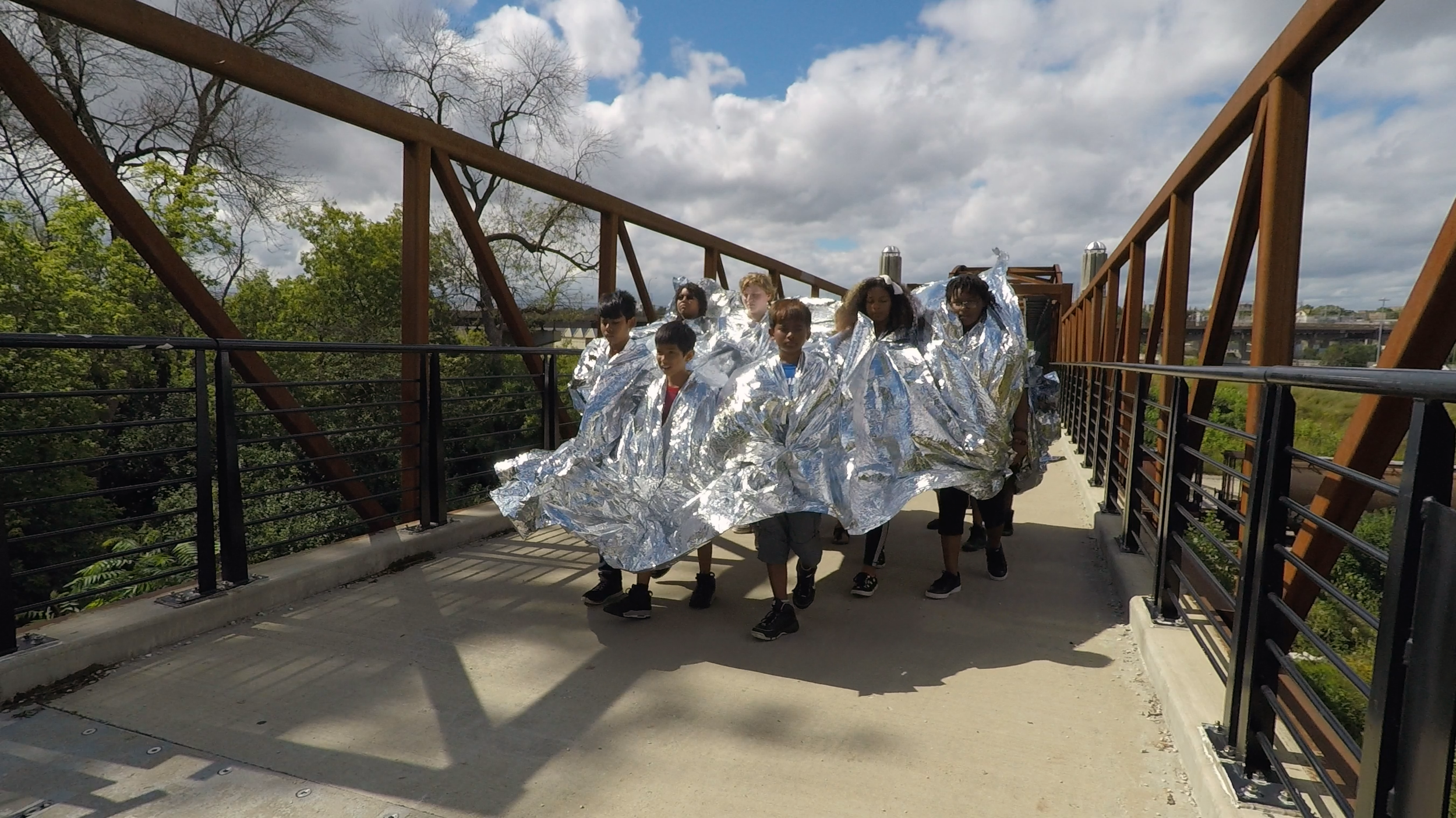Play With Us
Image from Kirsten Leenaars’ project (Re)Housing the American Dream
Can America Play Together Again?
Play With Us is an experimental approach to performance and play. We are presenting 2 performances- Make America Dream Again and Fugal Systems #7: Ghosts, Variations - to encourage play. We invite you to play with us.
Make America Dream Again is a play in progress. We make it up as we go along. Directed by artist Kirsten Leenaars, the play draws from Pedro Calderón de la Barca’s allegorical play Life Is A Dream, whose main characters - the King and his son - switch places. Make America Dream Again mashes up current events and Life Is A Dream to bring people together to develop a new collective reality centered around play and dreams. We are playing the parts until it is real!
This collective play-making employs Living Architecture installations created by 40 immigrant artists. The works become backdrops to depict the shifting scenes of our current political drama. The farcical performance questions reality and transformation within politics to examine philosophical ideas about the meaning of life versus illusion, and political questions about power, inequality, government, and treason. The artists in Living Architecture are the actors along with the public. Make America Dream Again has no final performance, instead it’s a series of work in progress vignettes. We’re challenging the role of the audience as inactive and separate from the performance; rather "play" is our central focus. The key is to involve the public in ongoing "play".
The musical performance Fugal Systems #7: Ghosts, Variations by Jordan Martins is a project encompassing jazz, sound, and performance. We’re investigating how the audience can actively tune in to the various strands of the music as they walk among the art installations and hear the work performed in one space, yet also hear the performance through the floorboards and walls of the other rooms.
The performance draws on recent research into musical games using both computer simulations and real musical interactions to trace how melodies evolve into structured languages within games. Five musicians spread across the multi-level space in stationary positions for a two hour durational performance, create enough acoustic porousness to allow sound bleed from level to level as the audience walks from room to room.
Over the course of the performance, the musicians play variations on the three sections of Albert Ayler’s “Ghosts” composition--improvising, stretching out, repeating, or otherwise interpreting the melodic fragments as they like. Certain pre-determined music codes--short blasts of a certain quantity, droned notions, or rhythmic patterns--will be used as signals, to which each musician will have to respond if they hear another musician playing it. Musicians will also be encouraged to develop spontaneous sound codes that are not pre-determined in an effort to effect the playing and response of the other musicians in the site, creating an ad hoc language. Musicians are also effected by the audience since playing blocks will be in each room for them to interact with.
Both projects question "playing" and "completeness" and how the artists and audiences will navigate through these spaces. Can America Play Together Again?
